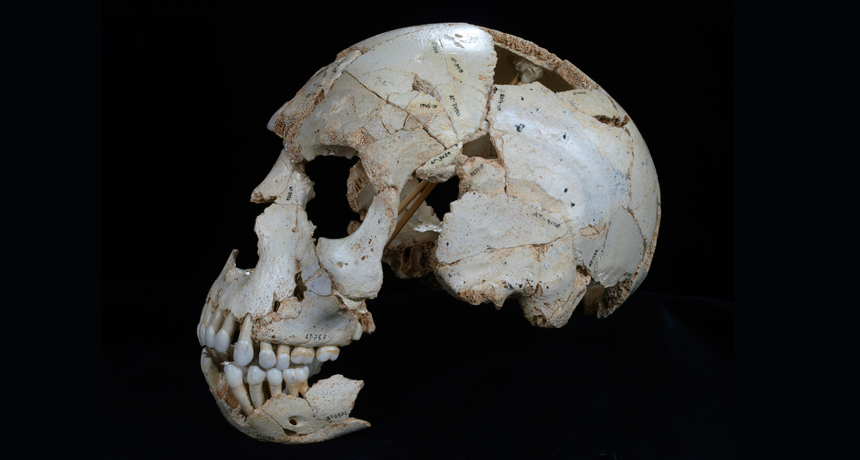
NEANDERTAL IN THE MAKING Hominids living in Spain some 400,000 years ago had facial features of Neandertals, such as the protruding teeth and lack of a chin seen in this newly analyzed fossil, but had not yet evolved the big brain cases seen 200,000 years later in full-blown Neandertals.
© Javier Trueba/Madrid Scientific Films